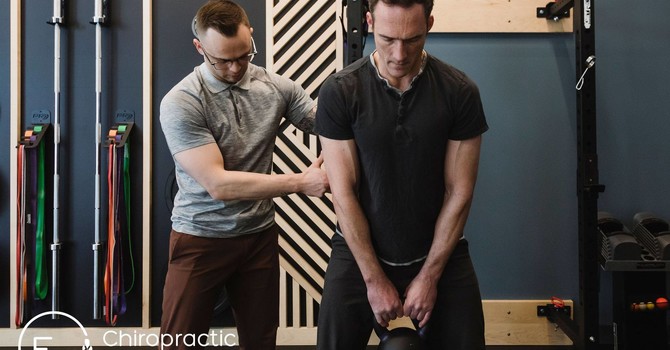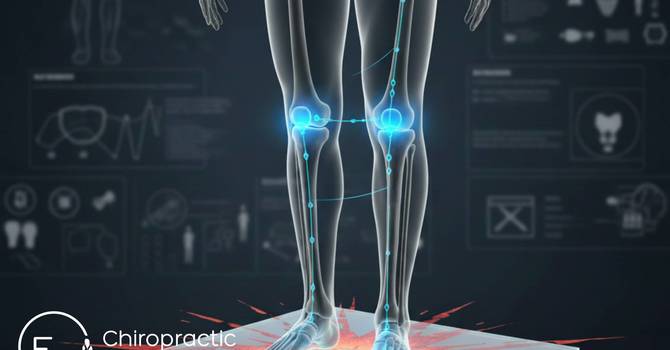
If you’ve ever struggled with recurring low back pain, you’ve probably heard someone say, “You just need a stronger core.” But here’s the catch — a strong core isn’t always a stable one.
Many active adults do endless crunches, planks, or ab workouts trying to “fix” their back pain, but they’re training strength, not stability. At E3 Chiropractic + Wellness, we see this all the time: patients with impressive gym strength who still experience pain because their core isn’t doing its job — protecting and stabilizing the spine.
So, how can you tell if your core is truly working the way it should? Let’s break down what core stability really means and why it’s the missing link in back pain prevention.
What “Core Stability” Really Means
Your core isn’t just your abs. It’s a team of muscles — including your diaphragm, deep abdominals, spinal stabilizers, pelvic floor, and even your glutes — all working together to support your spine during every movement.
True core stability means your body can maintain proper alignment and control under pressure — whether you’re lifting weights, standing, or reaching for something in your car.
When this system doesn’t engage properly, the lower back ends up doing more work than it’s designed to. Over time, this leads to tightness, inflammation, and chronic pain.
Read Next: Breaking Free from Back Pain—Why Sciatica Doesn’t Have to Control Your Life
Why Traditional Ab Workouts Miss the Mark
Crunches and sit-ups might make your abs stronger, but they don’t teach your body how to stabilize.
Most back pain patients I see have great surface-level strength but struggle with core coordination — getting the right muscles to turn on at the right time.
Here’s what happens with traditional ab work:
-
The superficial muscles (rectus abdominis) overwork.
-
The deep stabilizers (like the transverse abdominis and multifidus) underperform.
-
The spine bears more load, increasing strain and pain.
That’s why lear ning how to activate your deep core — not just your six-pack — is key to long-term relief.
Read Next: Overtraining or Under-Recovering? How to Know the Difference
How Chiropractic Care Helps Rebuild Core Stability
At E3 Chiropractic + Wellness, we take a movement-based approach to back pain. Chiropractic care helps restore the foundation your core depends on — proper joint alignment, muscle activation, and nervous system communication.
Here’s how we help:
-
Chiropractic adjustments – Restore normal motion to the spine and pelvis so stabilizing muscles can fire correctly.
-
Soft tissue therapy – Releases tension in overactive muscles that “lock up” your core system.
-
Functional movement assessment – Identifies weak links or asymmetries that contribute to instability.
-
Core re-education exercises – Teach your body how to brace, breathe, and move with control.
When your spine and nervous system work together, your core can finally do its job — keeping you stable, strong, and pain-free.
Read Next: Hydration, Recovery, and Pain: The Connection You Didn't Know About
Patient Story
“Mark,” a 40-year-old recreational lifter, came in after tweaking his back during deadlifts. He had a strong core by most standards, but testing revealed poor deep-core activation and pelvic instability.
After a few weeks of spinal adjustments, soft tissue work, and guided core retraining (focusing on breathing and control rather than load), Mark not only recovered — he started lifting heavier with less effort and no back tightness.
The difference wasn’t strength. It was stability.
Practical Tips to Activate Your Core the Right Way
You don’t need fancy equipment to start improving core stability. Here are a few ways to get started:
-
Master your breathing. Inhale deeply into your lower ribs and abdomen. This builds intra-abdominal pressure and engages your stabilizers naturally.
-
Try the “dead bug.” Slow, controlled movements teach your body to stabilize while your limbs move.
-
Focus on control, not fatigue. If you feel your low back working more than your abs, reset.
-
Move frequently. Long periods of sitting weaken the stabilizers. Stand, stretch, and move throughout your day.
-
Get assessed. A movement screen can reveal which stabilizers are underperforming — and how to fix them.
Final Thoughts
Back pain isn’t always about weakness — it’s often about coordination. When your core stabilizers and spine work together, you move better, perform better, and protect yourself from recurring pain.
Key Takeaway: A strong-looking core isn’t always a stable one. True spinal health comes from balance, control, and communication — not just muscle strength.
Click HERE to schedule a free discovery call with E3 Chiropractic + Wellness and discover how chiropractic care can help your core and your spine work together again.





